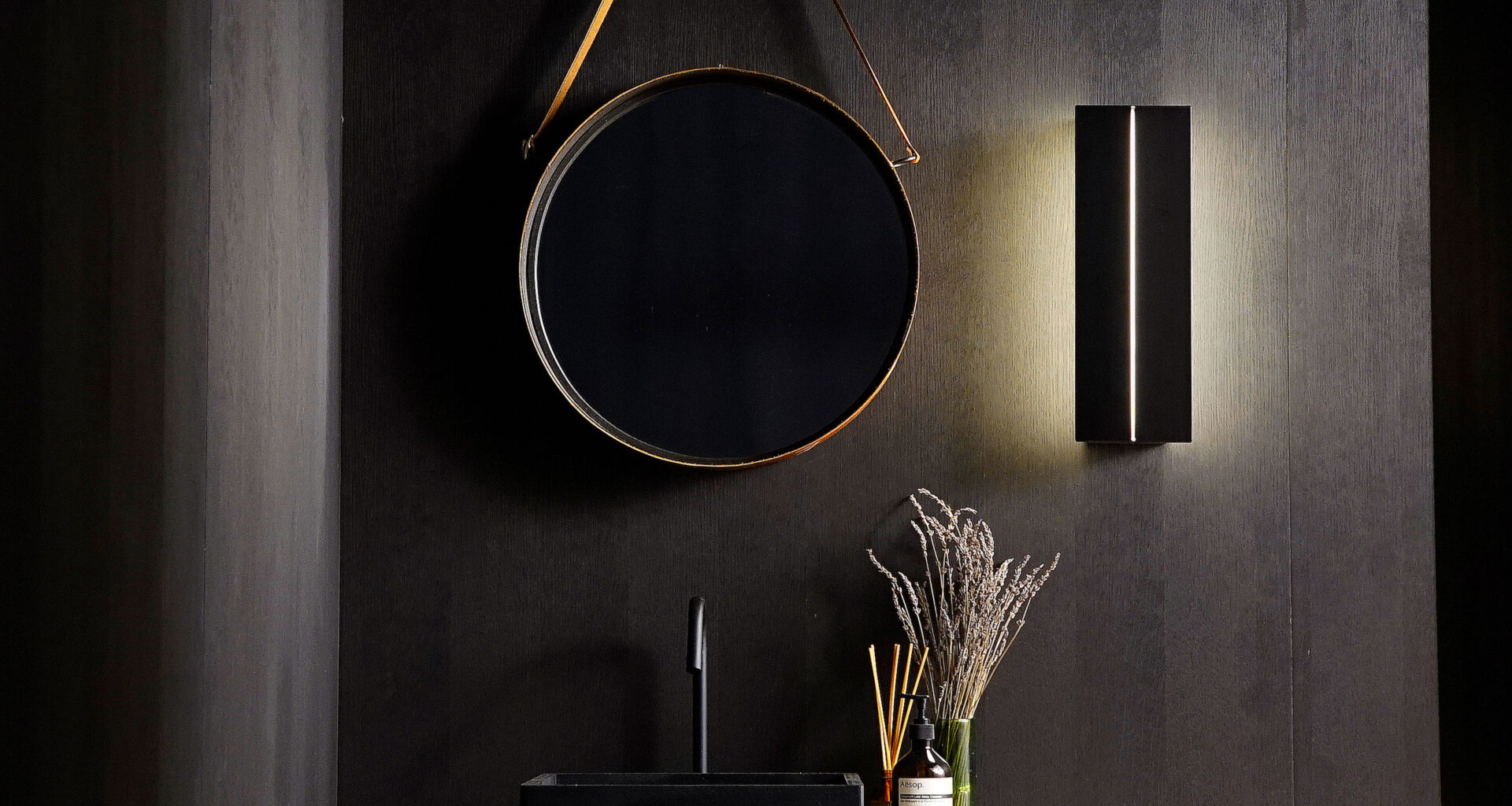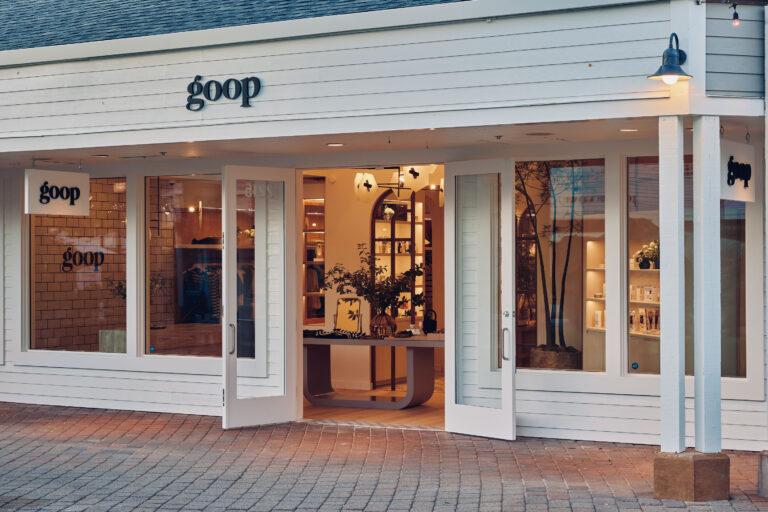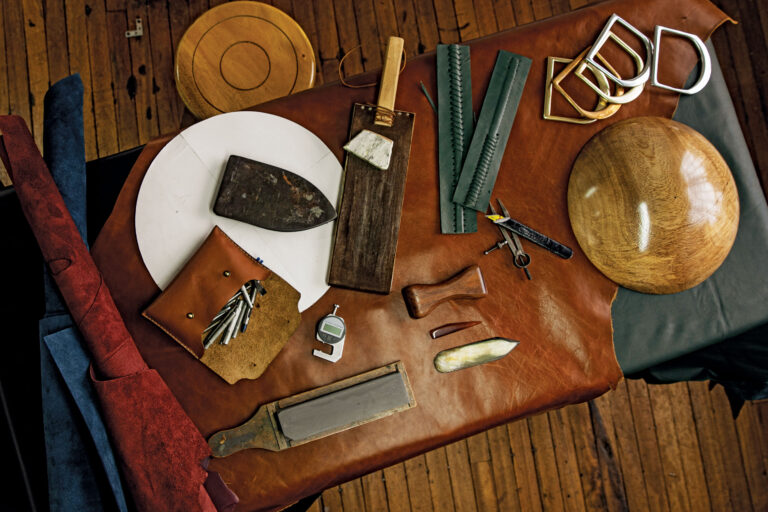Designer Brendan Ravenhill is a master of craft and a disciple of its many traditions. He learned building principles from his father; sharpened his skills constructing a timber-frame barn; and studied both sculpture and industrial design.

He learned to build wooden boats in Maine, took up metal work in Brooklyn, and based Brendan Ravenhill Studio, his workshop meets atelier, amid the rich manufacturing culture of Los Angeles.

“Building things with my hands triggered a lifetime of making,” says Ravenhill, who for having such a multifaceted background, is a simple guy. As are his American-made designs—honest, thoughtful, original work, devoid of artifice and ornamentation, the real deal. Still active in the furniture realm, Ravenhill is an especially bright spot in contemporary lighting design. His chandeliers, pendants and wall sconces nod to Mid-century modern design but radiate a timeless quality. “It’s really what we’re known for,” he says.
Of Ravenhill’s lighting lines, all are separately themed but solidly conceived, with some, like the striking, geometricized Ada Sconce, suitable for both interior and exterior applications. The minimalist metal shades of the Grain family make the pendants ideal for silhouetting solo or together at different lengths for a dimensional look.
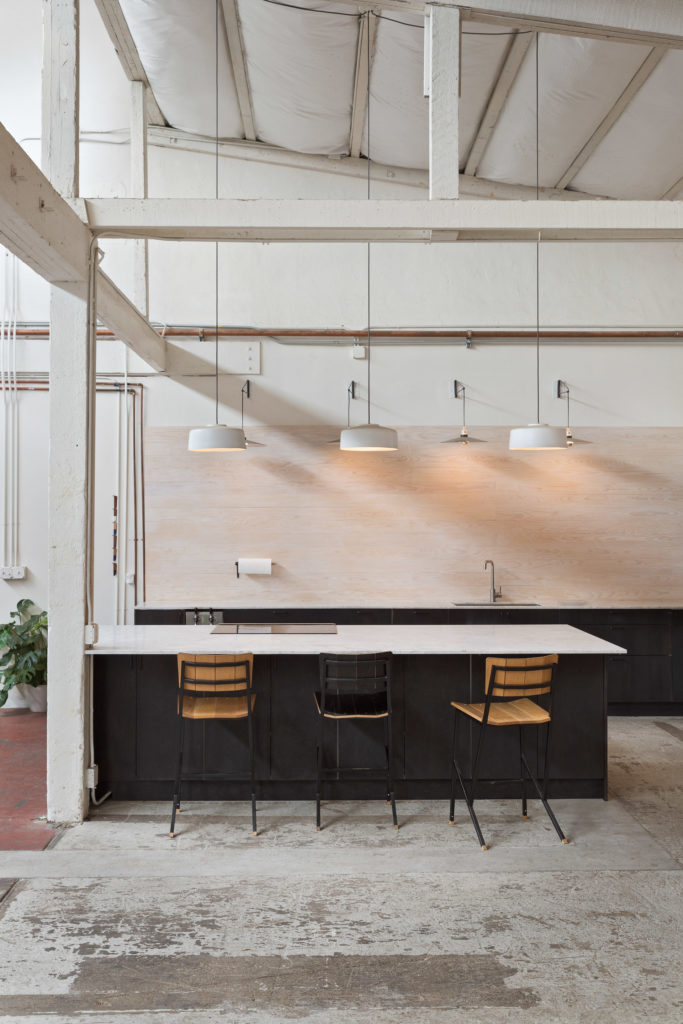
The Church collection of exposed globes is lustrously L.A, an idea initially conceptualized for the city’s Bethlehem Baptist Church by California Modernist Rudolph Schindler and featuring a simple framework of cords and rods that link the lights’ floating bulbs.
All formations of the line are clean and unobtrusive, with a contemplative quality that
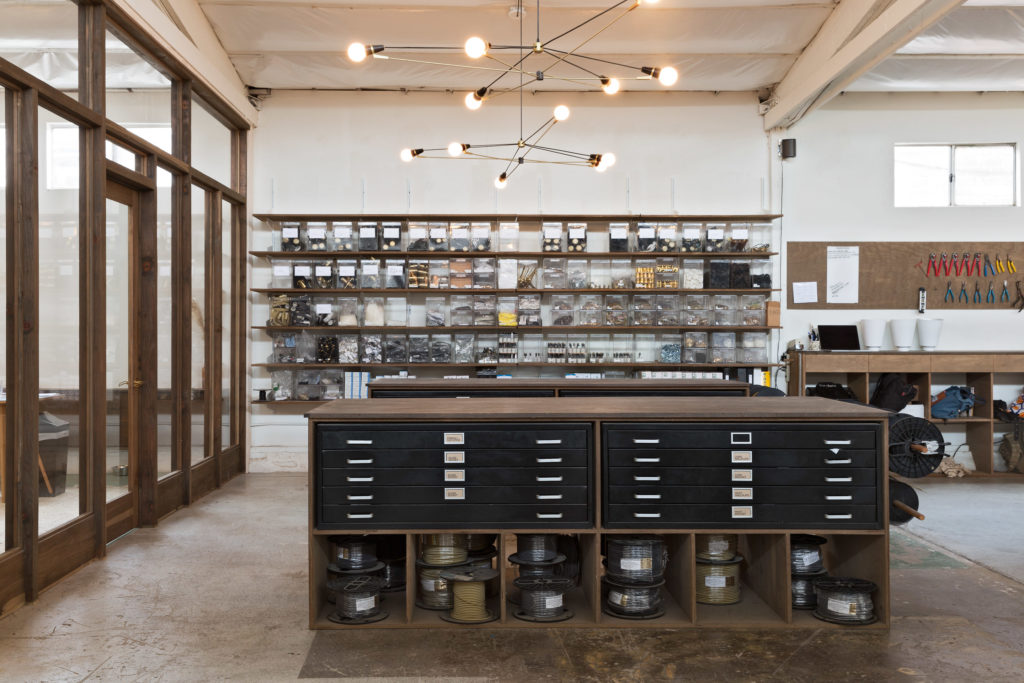
Each assemblage celebrates a logical use of materials. In this rationality is the beauty, and in this, is Ravenhill, who designs for simplicity, yes, but from a deeply theoretical place.
Looking to craft and physics to influence his process, Ravenhill says, “Lighting is a great medium for me. It’s sculptural,
PHOTOGRAPHS: COURTESY OF BRENDAN RAVENHILL STUDIO
